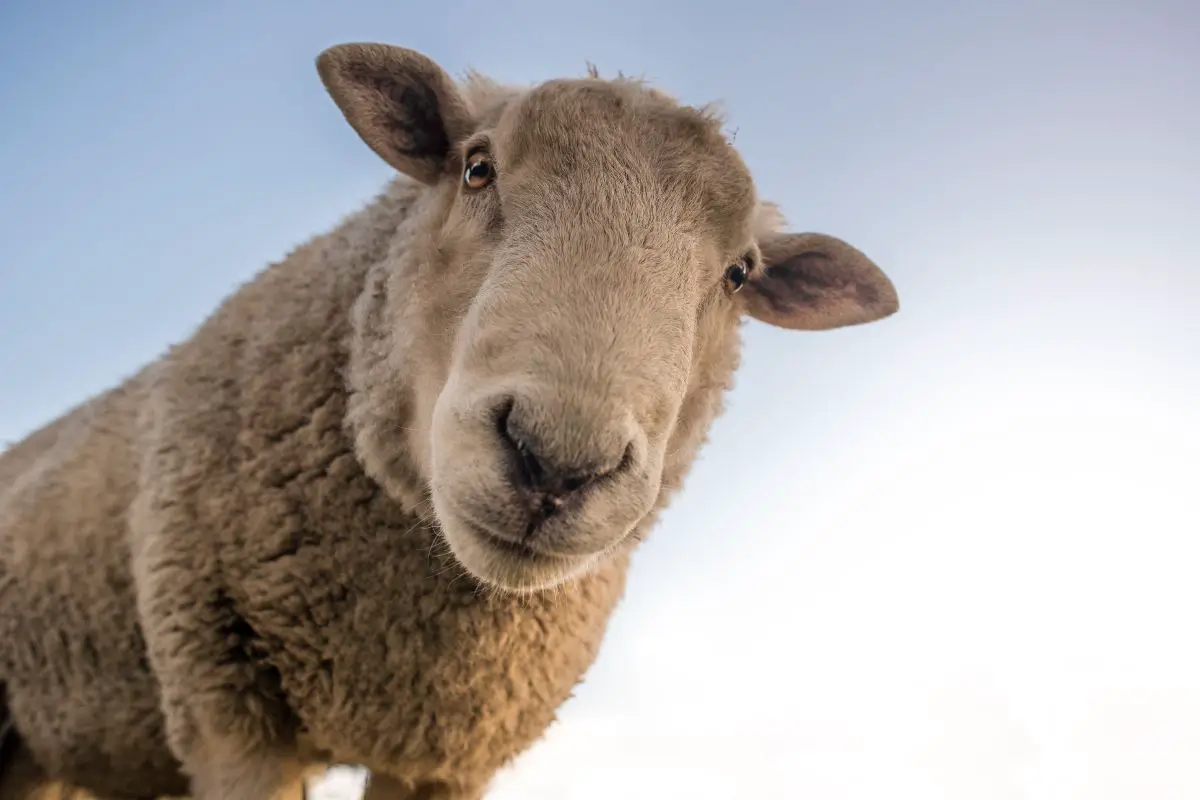
You’d better baa-lieve it: with their shaggy woolen coats, sheep are some of the world’s most well-known domesticated mammals. These short, stocky animals are usually white, but some are black or brown. Sheep are herbivores, meaning they only eat plants and don’t consume meat or hunt prey.
Sheep measures about 3.9-5.9 feet long, depending on age and gender, and males can weigh as much as 350 pounds. Female sheep can weigh as much as 220 pounds. They can live to reach the age of 10-12 years old.
Sheep can be found throughout North America, Europe, the Middle East, and Asia. They prefer to live on grassy knolls and in wide, open fields. What are some animals that are like sheep?
Read on to find out more.
1. Goats: Greatest of All Time? Or Just Another Mammal?
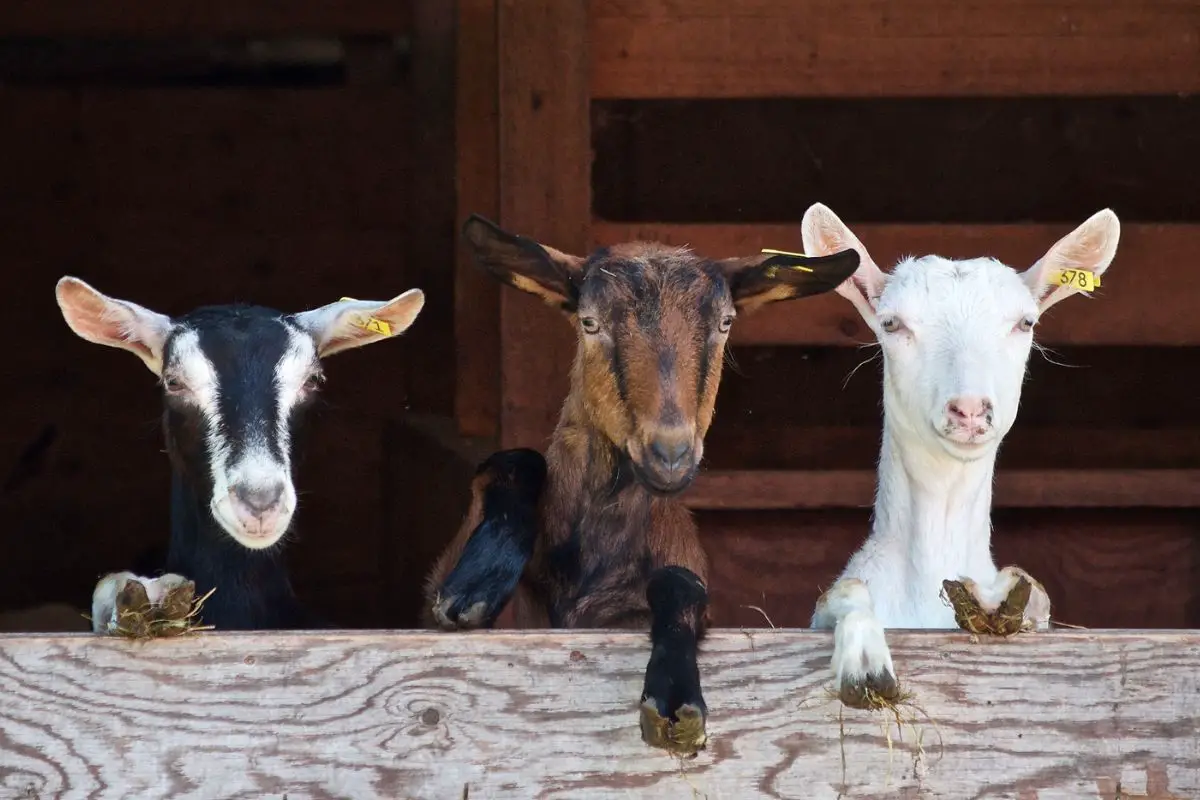
Goats are domesticated mammals from Asia and Europe but have made their way to North America and beyond. These unique animals have hooves and horns, usually between 16-23 inches high. Goats can weigh between 33 and 310 pounds, depending on the species.
Domestic goats can live to be 15-18 years old. These bleating mammals love grassy fields, but they also love to climb. You’ll find them on rocky cliffs and on piles of trash, too!
While goats are also domesticated mammals, they don’t produce wool as sheep do. Instead, they’re often farmed for their milk, which is used to make cheese and other foods for human consumption. Goats come in a range of colors, while most sheep are white.
Their tails stay perked up while a sheep’s tail hangs down.
2. Bighorn Sheep: Fascinating Horned Creatures
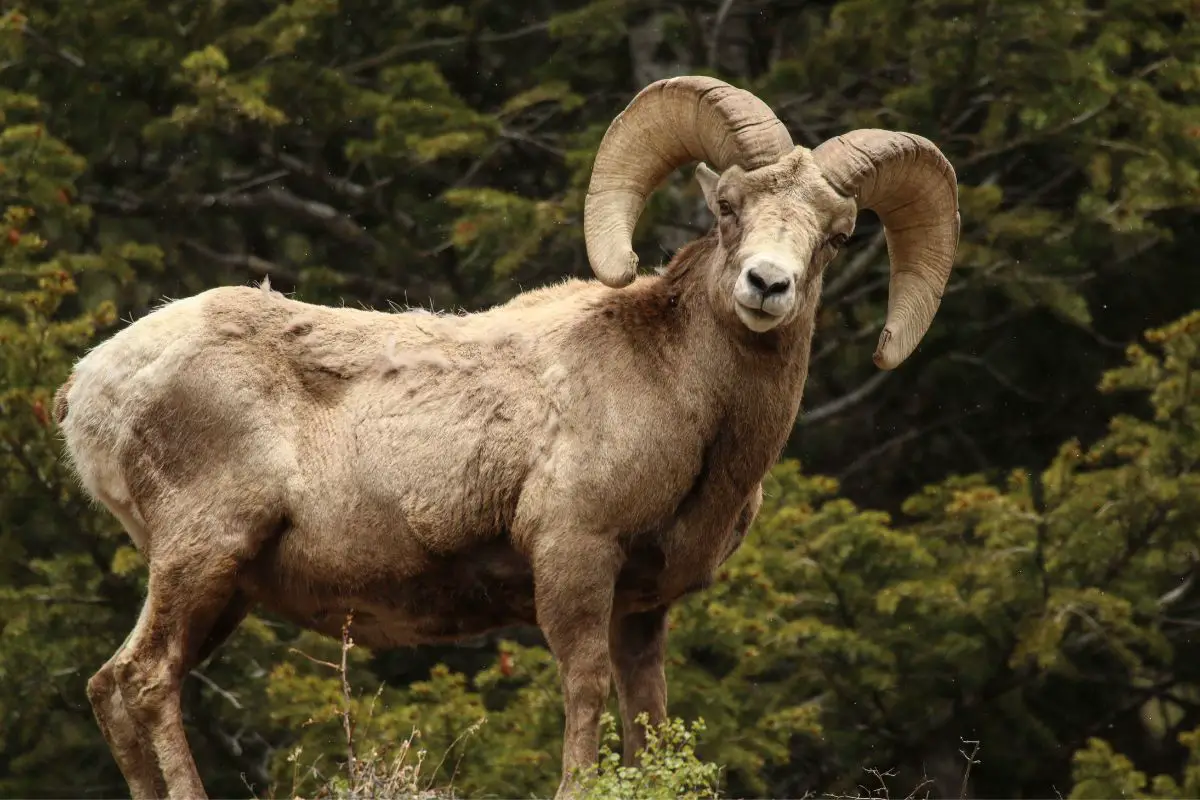
Bighorn sheep are also sheep, but they’re wild and not domesticated by humans. These mammals are native to North America and live in the mountainous regions of the US and Canada. Male bighorn sheep are called rams because they “ram” their massive horns into each other during mating season.
They can be up to 5.1 in length, and adults weigh around 150 pounds. These animals are also herbivores and love to munch on sage, holly bush, and cacti. They can live to be 10-16 years old.
While they’re both sheep, bighorn sheep don’t have thick wool like domesticated sheep. And domesticated sheep don’t have the distinctive large, curled horns that bighorn sheep do. The bighorn sheep can traverse rocky cliffsides, while a domesticated sheep would likely fall right off!
3. Oryx: Large and in Charge
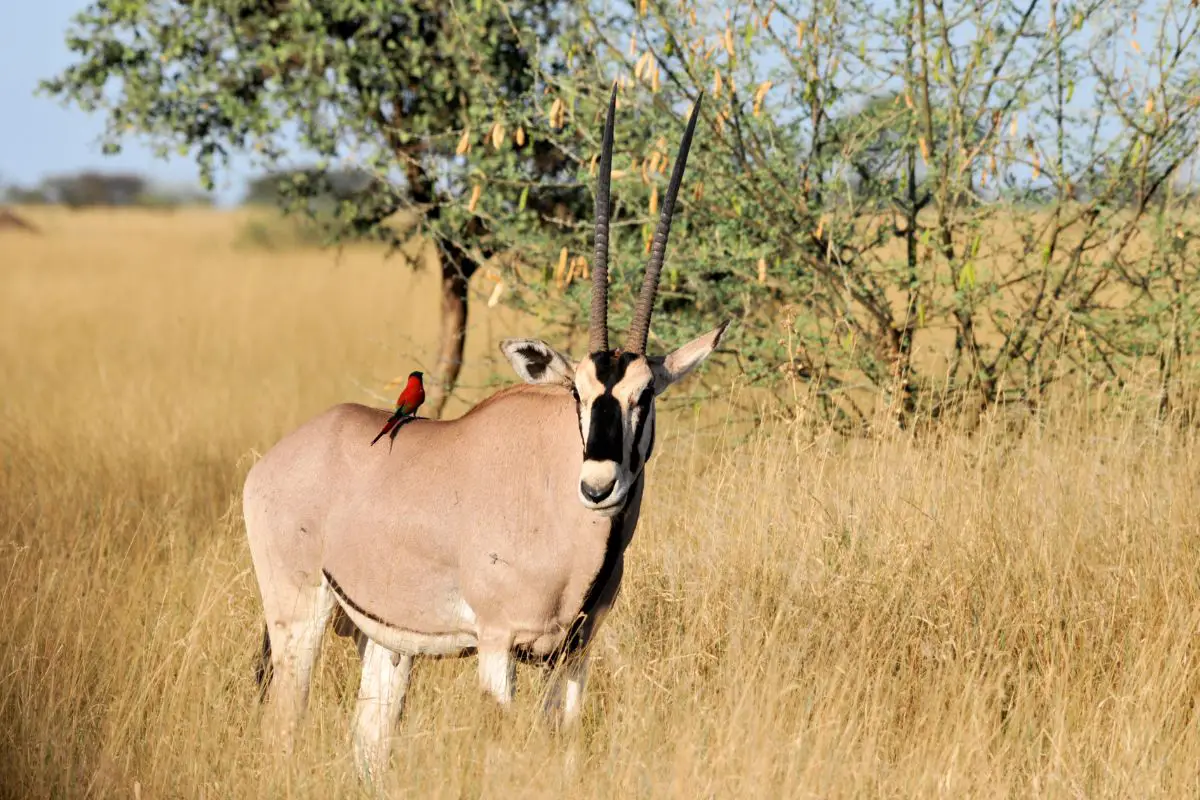
The oryx is a species of antelope native to Africa, but they’ve been introduced to the US, namely in New Mexico. These massive mammals have two long, curved horns that protrude from their heads, and they eat a diet that consists solely of plants like grass and shrubs. Oryx can be up to 4 feet tall at the shoulder and about 6-8 feet long.
They can weigh up to 450 pounds on average. Oryx may live from 15-20 years old in the wild. Oryx are herbivores like sheep, but that’s where the similarities end.
These large African natives are massive and not domesticated for farming. They also have much shorter fur and are typically light brown, white, and black.
4. Gazelle: The Graceful Runner
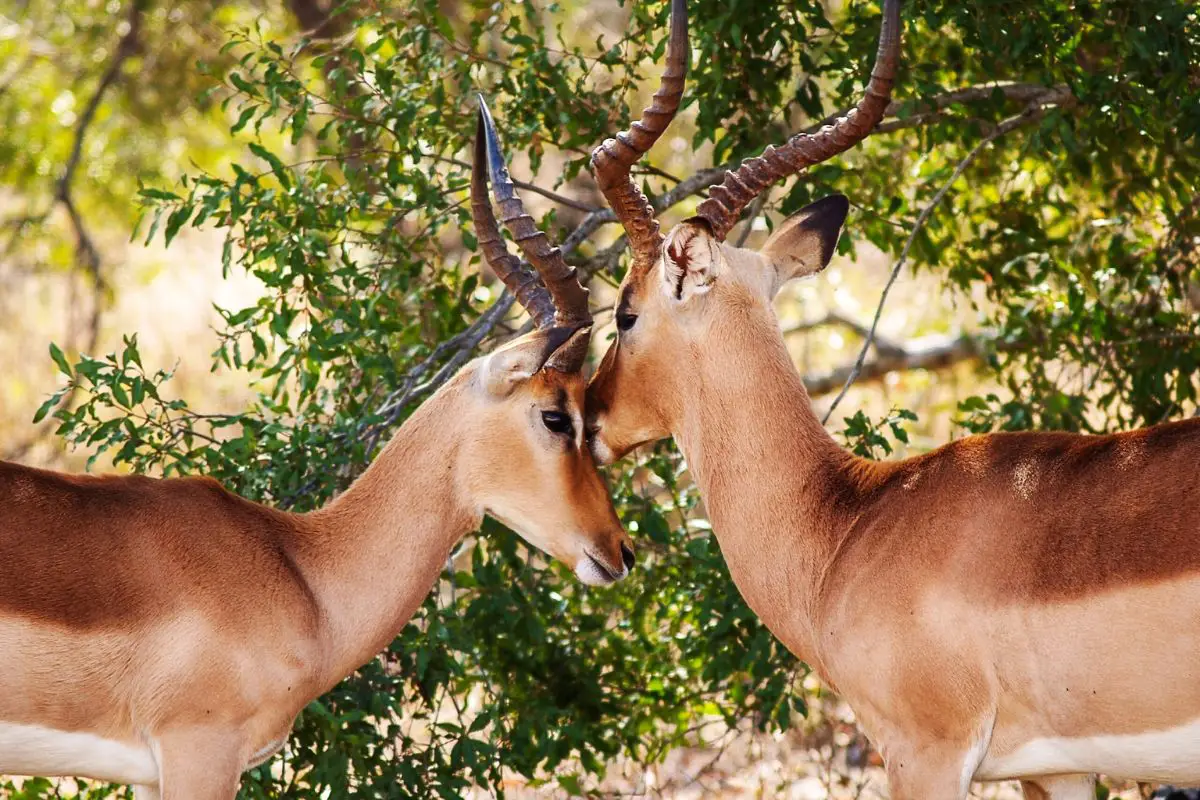
This awe-inspiring animal can reach speeds of up to 60 miles per hour and can jump as high as 10 feet into the air. The gazelle is part of the antelope family and lives in Africa among the grassy savannas. These hoofed mammals also eat plants entirely, which consist mainly of grass.
A gazelle can be up to 3.6 feet tall and 49 feet long, weighing between 26 and 165 pounds. They can live to be 10-12 years old, although sadly, their numbers are dwindling due to human hunting. Gazelles are not domesticated animals, which makes them quite different from sheep.
They’re also much leaner and faster. However, both of these mammals enjoy plants as their sole source of food and have horns. Gazelle’s horns are slender and long, while some domesticated sheep have short horns or even no ones.
5. Water Buffalo: Not a Buffalo, Not a Fish
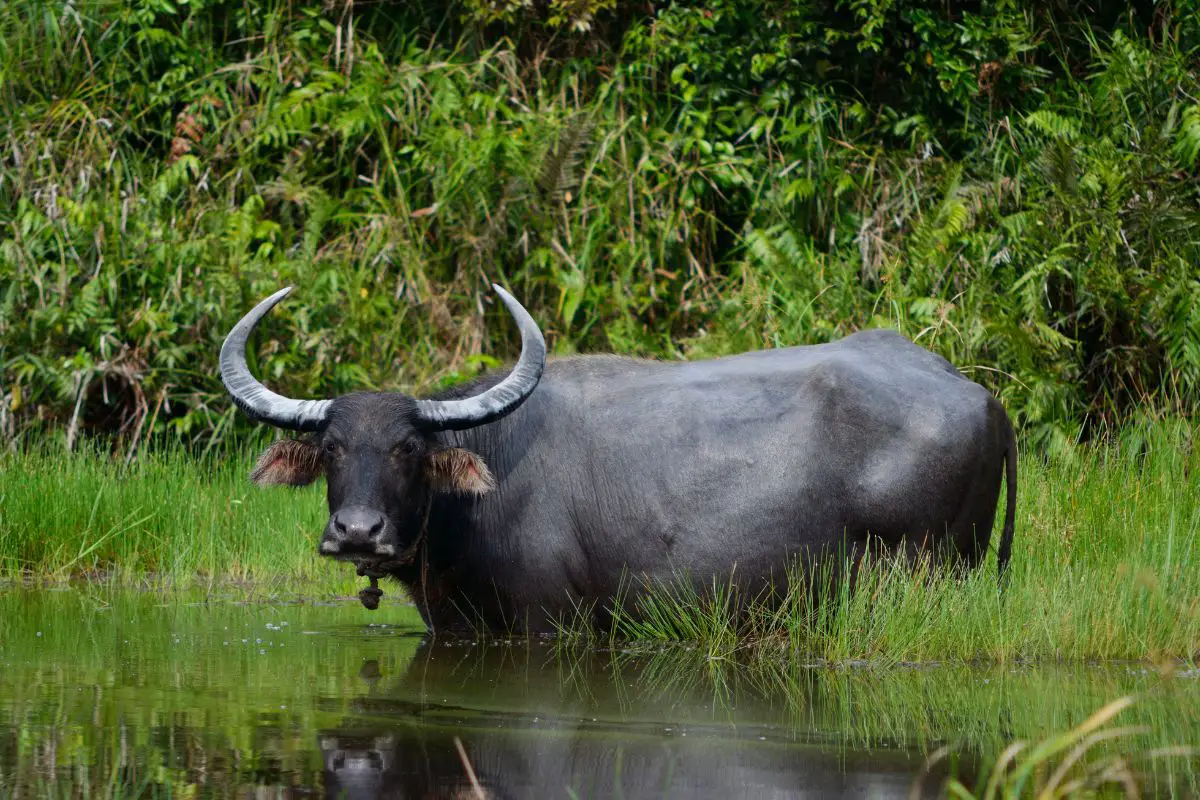
The water buffalo is a domesticated animal native to Southeast Asia but also lives in parts of Australia, Europe, North and South America, and parts of Africa. This massive animal has two distinctive curled horns atop its head. It can walk in the water thanks to its ultra-wide hooves that keep it from sinking into the mud.
Water buffalo are herbivores and eat grasses as well as many aquatic plants. They can be over 4 feet tall and over 8 feet long, with males weighing up to a whopping 1,200 pounds. These large animals have a lifespan of about 40 years in captivity, but it’s much shorter in the wild.
Both sheep and water buffalo are herbivores, and both animals have hooves. But the massive water buffalo is much larger and can traverse water, while sheep typically can’t. These large animals are domesticated to be used as “working animals,” while sheep are usually farmed for wool and milk.
6. Musk Ox: A Smelly Herbivore
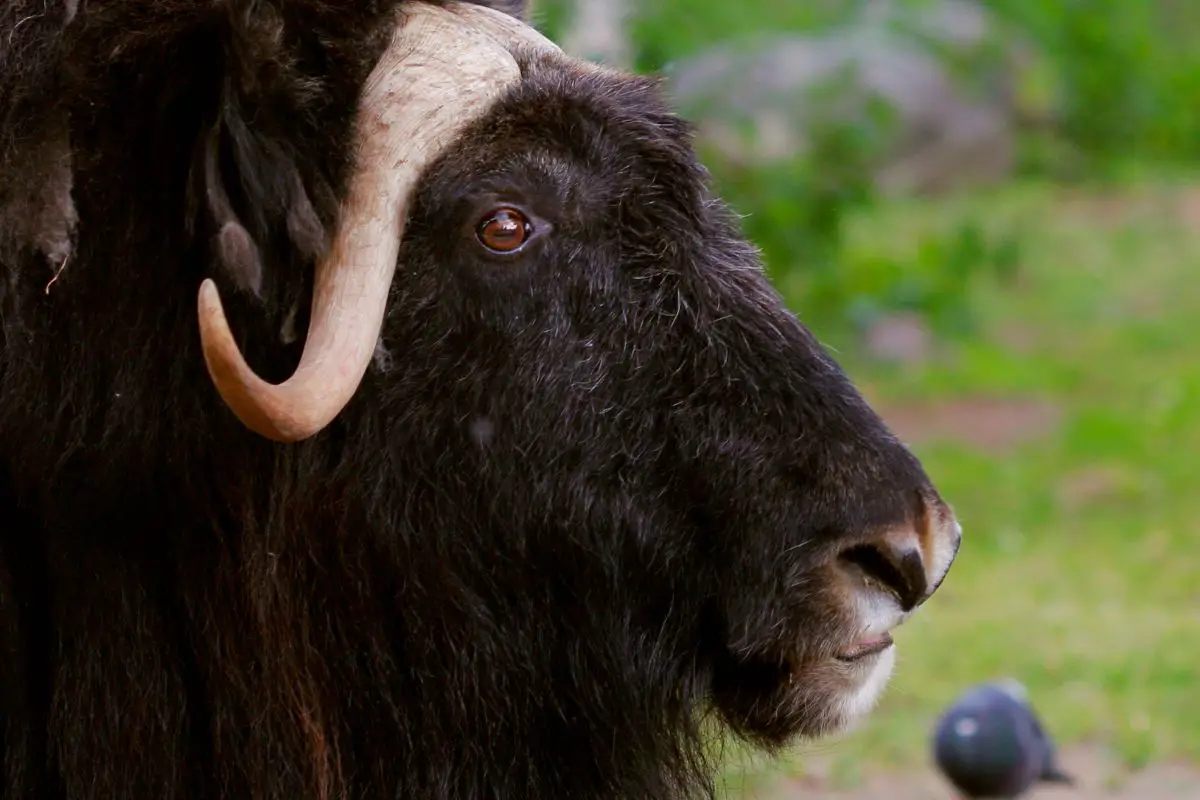
The musk ox gets its name due to a powerfully pungent odor that males emit during the mating rut. This large hoofed, horned mammal hails from the cold Arctic region and can stand up to 4.9 feet tall at the shoulder. A muck ox weighs between 400-900 pounds as an adult.
Their diet consists mostly of grass, moss, lichens, and grass, with willows being their favorite during the winter. Musk boxes may live to be 12-20 years old. Their long, shaggy fur keeps them warm and insulated in the cold and snow.
These large animals also live in Canada, Norway, Sweden, Siberian Russia, and Alaska. Musk oxen live in the frigid Arctic, where sheep cannot survive. They also have much darker fur and large, pronounced horns that curve on the side of their heads.
While both animals are herbivores and come from the same family, the musk ox is more closely related to goats than sheep.
7. American Bison: Iconic Symbol of the West
![]()
The American bison is easily recognizable with its long, brown, shaggy fur. This large, hoofed mammal is native to North America and found throughout the United States and Canada. American bison males can be up to 6.5 feet tall and 12.5 feet long.
Fully grown, they can weigh between 1,800 and 2,400 pounds. These animals were once threatened due to hunting, but their numbers are starting to increase again. They typically live to 15-20 years old in the wild.
American bison communicate by grunting and snorting, and males will butt heads during mating season. When they communicate, sheep tend to bleat or make a “baa” sound. Both sheep and the American bison are herbivores and prefer to graze on grasses as part of their main diet.
American bison are not domesticated, are much darker in color, and are significantly larger than sheep.
8. Domesticated Ox: A Docile Creature
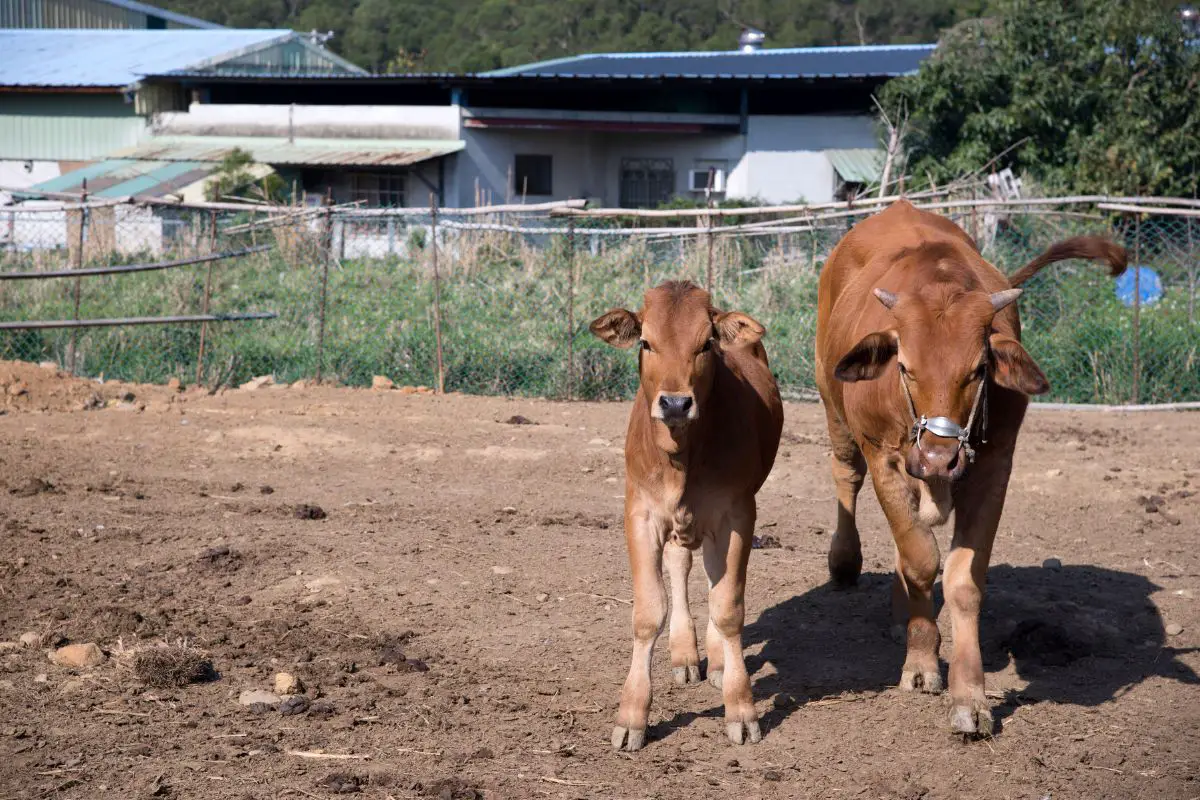
Domesticated ox once moved in herds throughout Europe (they’re no longer found anywhere in Europe today), North America, Asia, and Africa. Today, these large mammals are domesticated and used for food or to help with farm work in some parts of the world. These animals are herbivores and eat grasses, or grains farmers feed them.
They can weigh between 1,000 and 3,000 pounds, depending on gender and species. Oxen are 4-5 feet tall and shorter than the average cow. Their lifespan is typically up to 20 years old in captivity.
The domesticated ox is usually light to dark brown and eats only plants, just like sheep. However, these mammals are usually raised in Asia and Africa, while sheep are more common in Europe and North America. Oxen are much larger and taller than sheep and have short fur, while sheep are short and covered in thick wool.
9. Cattle: A Common Domesticated Beast
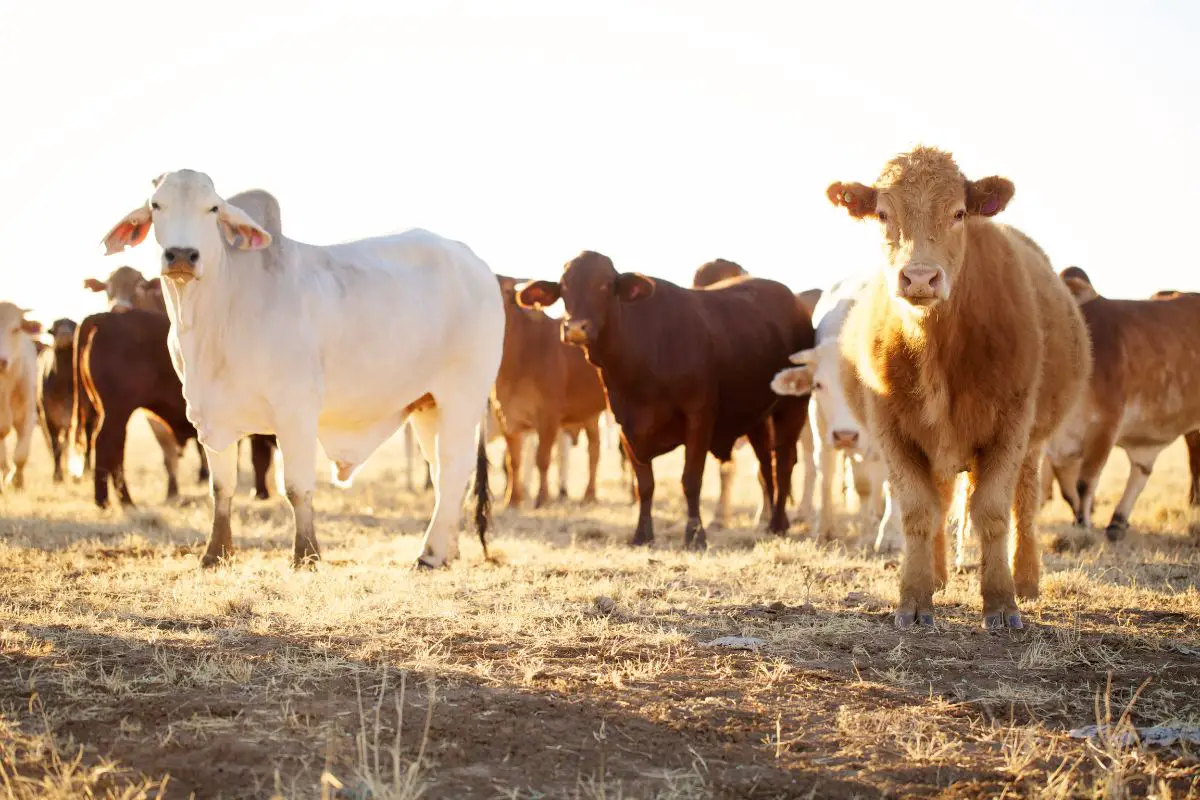
Cattle (bulls and cows) are raised for meat and milk and were first domesticated thousands of years ago. These large mammals are found worldwide and vary in color, size, and features. The average cattle weigh between 1,3000 and 14,000 pounds, with males weighing more than females.
A dairy cow is slightly shorter than an adult human but can be as tall as 6’ 9”. Their lifespan varies depending on when farmers kill them for meat, but most live between 6-20 years in captivity. Cattle are herbivores that graze on grass, just like sheep do.
They are also considered one of the most common farm animals around the globe. Some people kill sheep for food, but male cattle are much more commonly slaughtered for meat production. Cattle make a low, long moo sound, while sheep have a much higher-pitched bleat when they communicate.
10. Pronghorn: A Uniquely Beautiful Creature
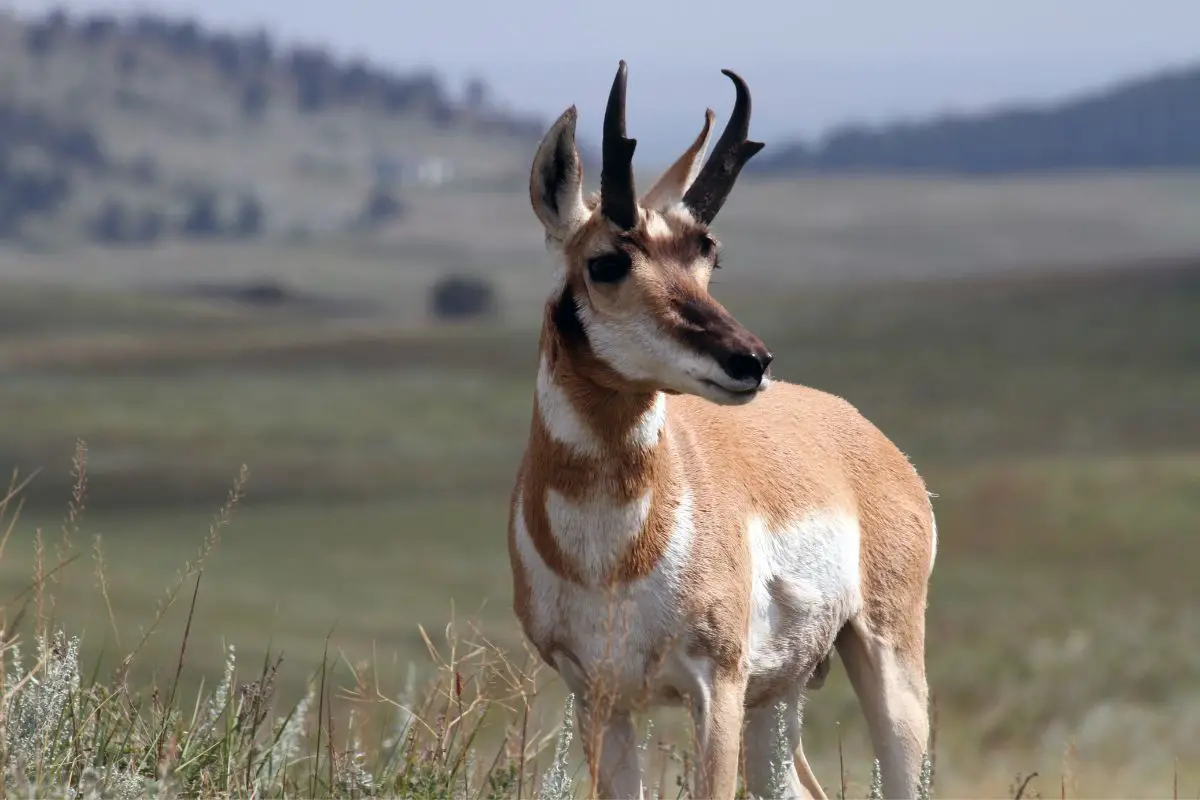
Pronghorns are only found in North America and tend to live in the great plains states like New Mexico, Arizona, Wyoming, Utah, and Colorado. These beautiful hooved mammals like to live in open fields, grasslands, plains, and deserts. Pronghorns are strictly herbivores and weigh between 90-150 pounds.
The average pronghorn is about 4.5 feet long and 3 feet tall. Their average lifespan is 12-14 years old if they are not killed and eaten by predators. These beautiful creatures have a deer-like body shape with a long snout and reddish-brown colored fur.
The pronghorn is related to goats and antelopes, with bright white stripes on the neck and face. Sheep are typically one color, have a rounder body shape, and their legs are much shorter. A pronghorn can reach impressive speeds of up to 60 miles per hour when they run.
Sheep typically can’t reach speeds of much more than 25 miles per hour, and that speed is usually reserved for wild bighorn sheep. The beautiful pronghorn is not domesticated and is considered a special species due to its exclusivity to the North American region of the world.
11. Alpacas: A Soft, Fuzzy Favorite
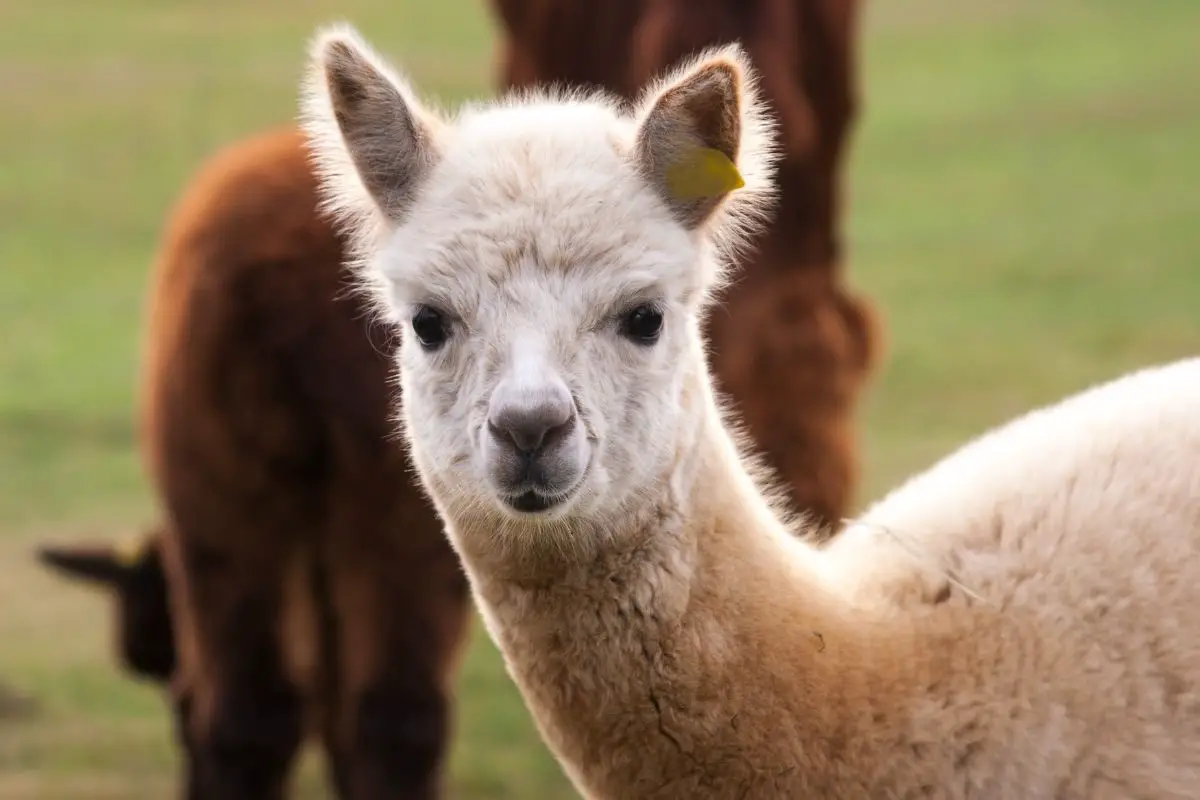
Alpacas have long necks and thick, soft fur. These beautiful creatures have been domesticated for their fur, similar to sheep. Alpacas are smaller than llamas and reach around 3.2 feet at the withers.
They can weigh between 110-190 pounds in adulthood. Their average lifespan is 15-20 years old, and these herbivores hail from South America, although they’re now raised in various countries worldwide. They mostly inhabit regions of Ecuador, Columbia, Chile, and Argentina and are often raised as pack animals in regions like the Andes Mountains of Peru.
While alpacas eat grass, they also enjoy noshing on bark, stems, and leaves. Both sheep and alpacas are lauded for their fur, but the alpaca’s wool is much softer and more expensive than sheep’s wool. Sheep’s wool has lanolin, which emits an odor, while alpaca wool does not.
Alpacas are much taller than sheep and resemble camels or llamas due to their long necks.
12. Domestic Pigs: From Pot Bellies to Pork
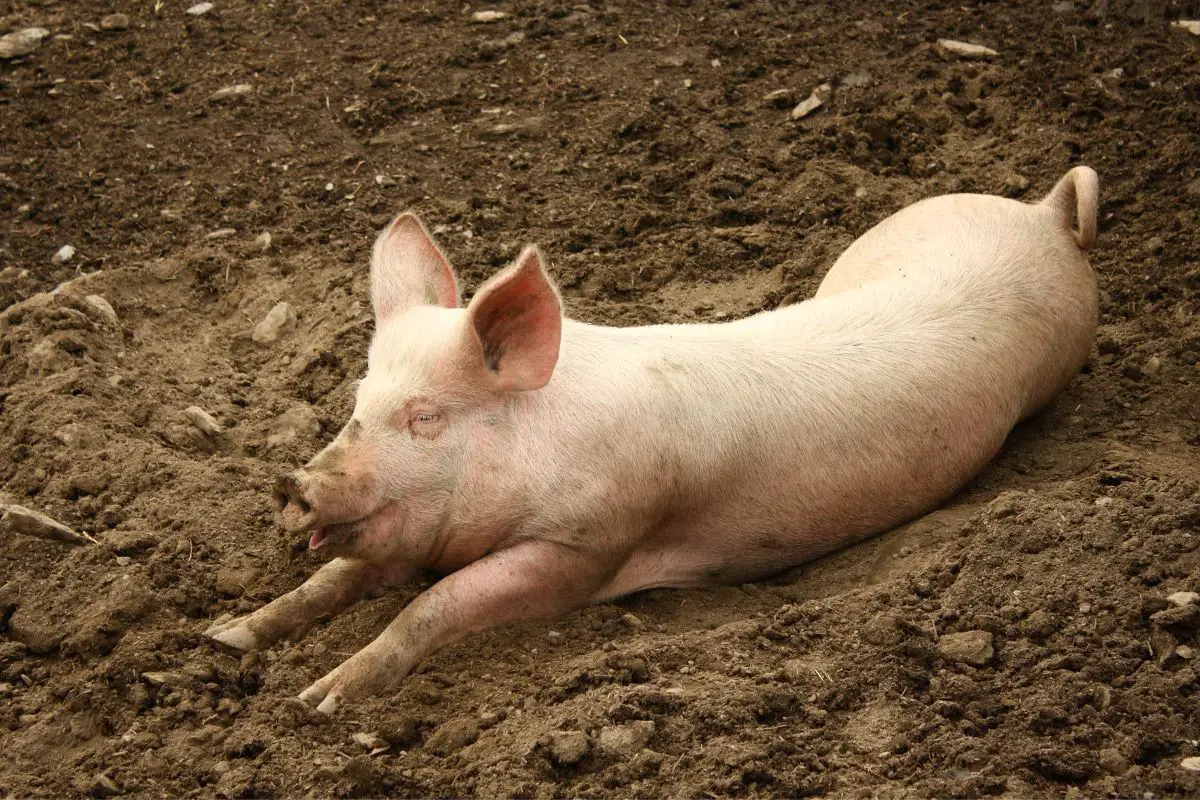
Domestic pigs are mammals with stout bodies and short legs. These omnivores can weigh up to 220 pounds and originate from the Old World but were brought to North America for domestication by explorers and colonizers as early as the 1500s. Domestic pigs are now found worldwide and have an average lifespan of 15-20 years.
These hefty creatures are omnivores but prefer to eat corn, wheat, soy, or barley and slop, which contains all kinds of leftover foods like vegetable peels and fruit rinds. Most domestic pigs are raised for meat and are between 2 to 5 feet tall in most cases. Sheep have a layer of thick wool all over their bodies, while pigs have a very fine layer of hair or fur that is sometimes invisible to the naked eye.
Domestic pigs vary in color, ranging from light pink or white to brown, black and white. Some domestic pigs weigh between 300-700 pounds, while others can be much heavier and may reach a weight of up to 1,000 pounds or even more.
13. Llamas: No Drama
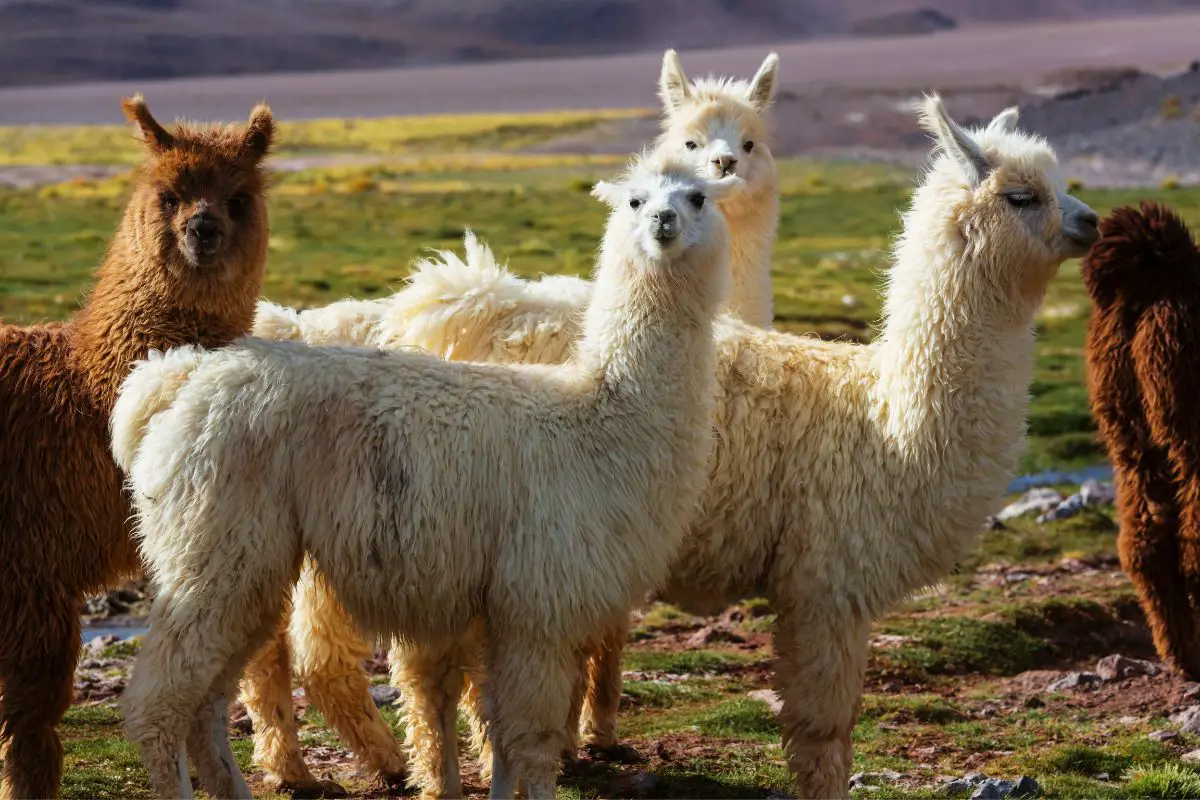
Llamas are similar to alpacas in their shape (long necks), but they are not identical. The llama hails from South America and has been considered a domesticated animal for centuries. Adult llamas can be as tall as 5’ 9” and weigh between 290-440 pounds.
They prefer living in high elevations and mountains, feasting on dense shrubs and thick grasses. These tall, beautiful herbivore mammals can live to be 20 years old in the wild. They have a wooly coat like alpaca and sheep but are primarily raised to help carry heavy packs up mountains and over long distances.
Llamas, sheep, and alpacas have thick, wooly coats, but llamas have more lanolin in their wool than alpacas. Sheep are ovine, while llamas are part of the camelid species. Some people breed llamas for their milk, and they’re known to have quite a rambunctious personality.
When it comes to behavior, sheep tend to be much calmer and more docile than llamas.
14. Donkeys: Kind of Like a Horse, but Not Quite

Donkeys are unique animals in the same family as the horse but are much smaller. These hoofed mammals are typically between 2.6-5.2 feet tall and weigh 180-1,100 pounds. The average donkey lives between 27-40 years in captivity.
Their gray-colored coats and unique “honking” bray give them distinction amongst their peers. Donkeys are strictly herbivores and prefer grass, hay, straw, and very small amounts of fruits, vegetables, and succulents. These animals are found worldwide and may be either wild or domesticated.
Sheep and donkeys are hooved mammals, and humans often domesticate for various purposes. Donkeys are larger than sheep, come from a different family of animals, and are not raised for their fur. Most donkeys are used to help people carry heavy loads or to do work on farms.
They are typically gray, while sheep are mostly white, brown, or black (depending on the species).
15. Wildebeest: A Beast of an Animal
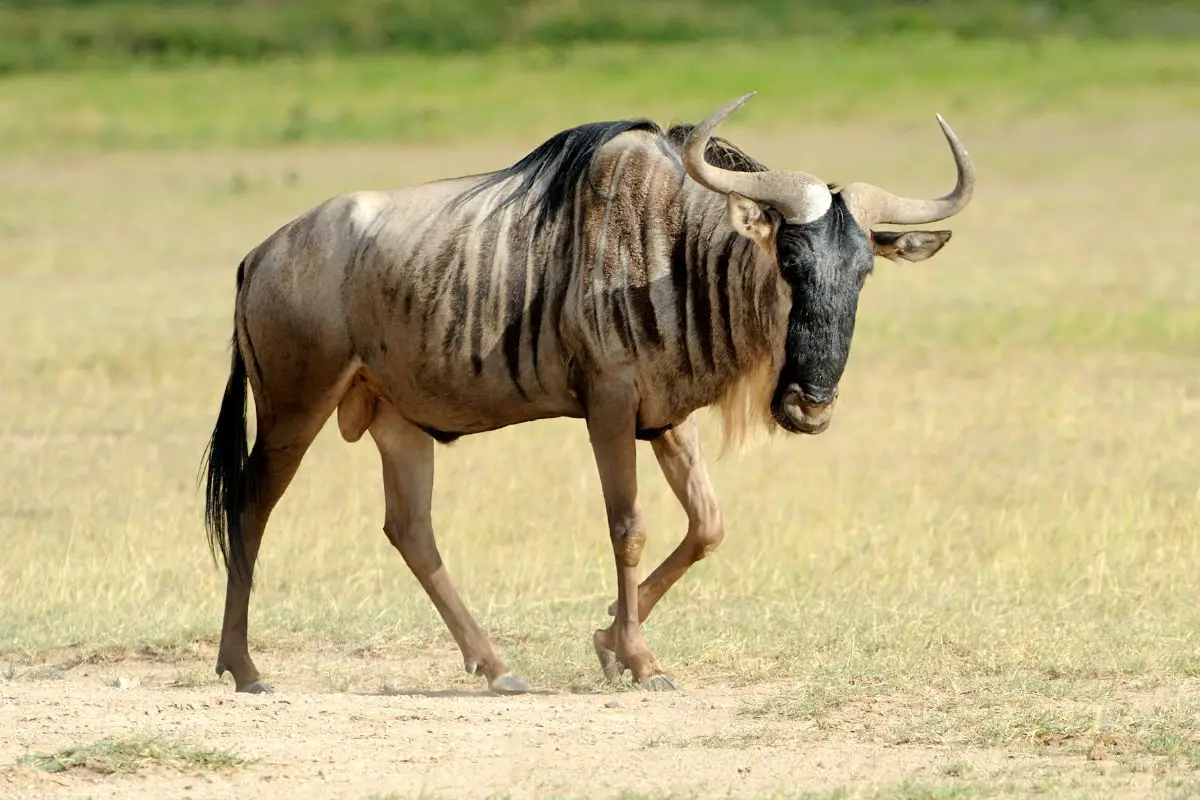
Wildebeests are part of the antelope family and live throughout various regions of Africa. These unique hooved mammals are found in the wild and domesticated by farmers. They are herbivores that love to graze on grasses and may reach a height of between 4.2-4.8 feet.
Wildebeests have an average lifespan of 20 years. While they don’t look like sheep, they are within the same Bovidae family. When looking for food, they follow herds of other animals to locate the nearest source of sweet, dense grass.
These animals are related to sheep, but they’re darker, larger, and only live within the African continent. They are often bred for food and leather, thanks to their coarse flesh. Wildebeests have a large head, broad shoulders, slender back end, and spindly legs.
Sheep are rounder and shorter, have thick wool instead of wispy fur, and a long mane like wildebeests.
FAQs
What is the scientific name for domestic sheep?
The domestic sheep’s scientific name is Ovis aries. This comes from the Latin words “ovis” and “aries,” which mean “sheep” and “ram.” All species of sheep are mammals and are part of the Bovidae family.
What’s the difference between wild and domestic sheep?
All sheep are covered in wool, but domestic sheep are much fluffier. Wild sheep tend to have more pronounced horns and can also live in much more rugged environments, such as rocky cliffs and mountainsides.
Do sheep have teeth?
Sheep have “baby teeth” just like humans. They lose their baby teeth as they age and typically don’t grow a full set of adult teeth until they’re four.
